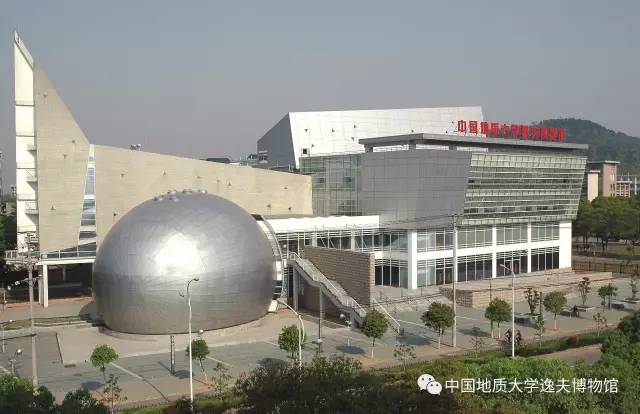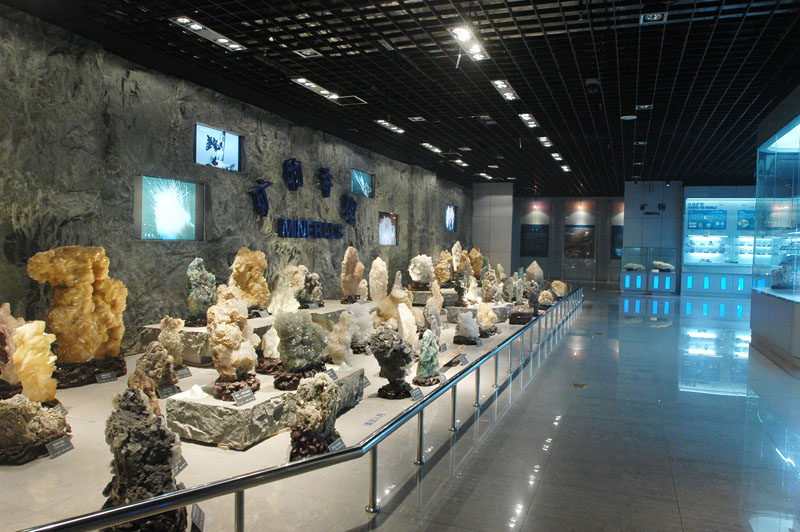Yifu Museum of China University of Geosciences

Yifu Museum of China University of Geosciences
中国地质大学逸夫博物馆
Address: 388 Lumo Road, Hongshan district, Wuhan, Hubei province.
Website: yifumuseum.cug.edu.cn (En) mus.cug.edu.cn(Cn)
Hours: 8:30-12:00 / 14:30-17:00 (Monday to Friday)
Weekends & holidays: 9:00-17:00
No entry one hour in advance.
General admission:
40 yuan (adults); 20 yuan (students); 10 yuan (children under 1.2m in height).
Tel: (+86-27) 67848584/67883347-8666 (tourist service consultation)
(+86-27) 67883347-8555 (ticketing)

Yifu Museum of China University of Geosciences is a national grade-three museum and was the first university-based museum.
The museum’s predecessor - the Peking Institute of Geosciences - was founded on Nov 7, 1957. The founding collection featured specimens from the Geology Department of Peking University, Tsinghua University, Tianjin University (Peiyang University) and Tangshan Railway College.
When the China University of Geosciences was relocated from Beijing to Wuhan, part of its collection was also transported. In 1982, the museum of the Wuhan Institute of Geology was opened to the public. In 1987, it was renamed the Museum of China University of Geosciences (Wuhan). In 2001, with the sponsorship of the Shaw Foundation and the Ministry of Education, the museum began to build a new building, and completed the project - with its current name - in 2003.

The museum is located in the south of the West Campus of the university on Lumo Road. It is adjacent to the picturesque East Lake and Nanwang Mountain. The architectural style of the museum integrates the characteristics of geology, bionics and astronomy, and won the first prize for architectural design in Hubei province. It is a well-known cultural and educational landmark and an important part of the city’s East Lake scenic area.
The floor space of the museum is about 10,000 square meters, and the exhibition halls cover an area of 5,000 sq m, displaying minerals, rocks and gerontological specimens which were mainly collected by pioneers in geology, as well as the university’s students and teachers, or through donation and purchase.
The museum houses more than 40,000 geological specimens, including more than 3,000 rare pieces, such as the famous dinosaur skeleton fossils and various precious minerals, gemstones, and fossil specimens. The museum has opened six permanent exhibitions, covering such themes as the earth sciences, the origins of life and evolution, minerals and rocks, jewelry and jade, mineral resources and donations from Zhang He, director of Shenzhen Paleontological Museum.
It will also open a new space for water resources, environmental and geological disasters, as well as two halls for temporary exhibitions and science popularization. The museum demonstrates the changes in the earth over the past 4.6 billion years and offers visitors an opportunity to learn about the evolution of lives on the planet over the past 3.8 billion years. It also displays underground treasures like jewels and exquisite jade, multicolored minerals and rocks, and natural minerals. Meanwhile, these exhibits remind visitors of the importance of the harmonious development of human and nature and people’s obligation to protect the natural environment.




